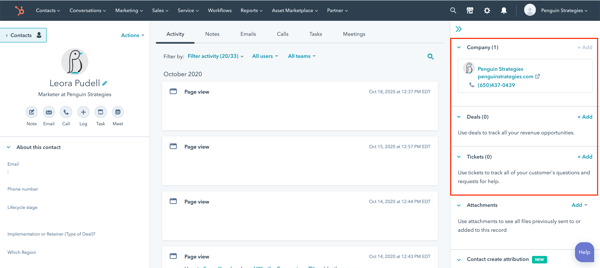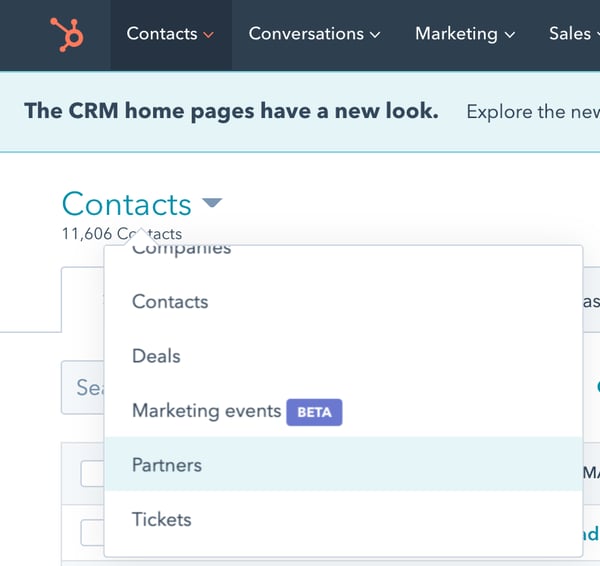
In a recent blog, we talked about our excitement over some of the new HubSpot features. First among them was custom objects- something we are so excited about we decided we have so much more to say. What’s all the hype for you may ask? What even is a HubSpot object? Let us break it down starting from the top.
What is a HubSpot Object
Until now Hubspot had 4 groups of objects: contact, company, deal, ticket. These standard objects are created as you build your CRM. Information regarding an individual contact falls under the contact object, while the information regarding a company falls under a company object.
All objects interact with each other, but also have individualized sub-items, such as properties, types, and more that help you define and divide the different factors you are interested in for each object.
For example, when you click on a contact in HubSpot you will see all their information you have, their records, properties, and more. On the right side, you will see the other objects they interact with and if you have any additional relevant information, it will be displayed so you can see more (i.e. how many contacts you have from that company, how many records, and related tickets if any).
All in all, these objects and information give you the ability to sort and report data more efficiently through your CRM.

Ok, Now What is a Custom Object?
Custom objects were created so companies can customize their data in HubSpot for when they need something more specific or robust than the standard objects. By using custom objects, companies can now more clearly define certain parameters and areas that they are interested in.
Custom objects give you the ability to personalize emails with custom object values, enroll custom objects into workflows, and create custom reporting around them.
Now, instead of having to set up advanced properties and workflows to put the right people in the right places, you can simplify it using a custom object from the beginning.
For example, let’s say my company works with multiple partners and I want to track how many deals are actually closed from each partner’s referrals. I can create a Custom Object called Partner and build records of my partners and their relevant fields, their name, primary business focus, when our partnership started, associated deals, or any other information I may want to see at-a-glance. I can also add interactions with other objects such as contacts or companies to see other contacts associated with each partner or company that they referred. With this custom object, I can now drill down further into the impact of the partnership and create streamlined processes to enhance the program and its reporting.

Custom objects and Automation
Let’s say I have a specific partner form that my partners fill out when they are sending a new contact into our database. With custom objects I can create an automated workflow that attributes the new contact to the relevant Partner.
A different type of automation with these custom objects is email personalization. Instead of sending a generic email out to each partner talking about their progress, I can put in a personalization token from a property in their custom object. For example, I can include the exact number of people each partner has directed to us.
The example doesn’t end with partners though. There are many other times when a custom object may be the right fit for your business but, as explained in the name, they’re all custom to your company's needs.
Yes, technically most of these processes can be done through workarounds using properties, types, and workflows, but this implementation is much smoother and it will save a lot on upkeep in the long run.
In a Nutshell
Understanding and utilizing your objects can help any company streamline data for better reporting and a more useful CRM experience. If you find yourself constantly looking for more specific information, creating a custom object may be right for you. HubSpot and its services are designed to make your life as simple and user-friendly as possible. Sometimes that may take a bit of extra learning, but over time the investment is well worth it.
Need HubSpot help? Let us be your guide.

by Mark Fisher on October 25, 2020
CTO of Penguins Strategies. With over 20 years of business experience, Mark has modeled a perfect blend of marketing technology and strategy to take businesses to the next level. Mark is an expert in HubSpot implementation





